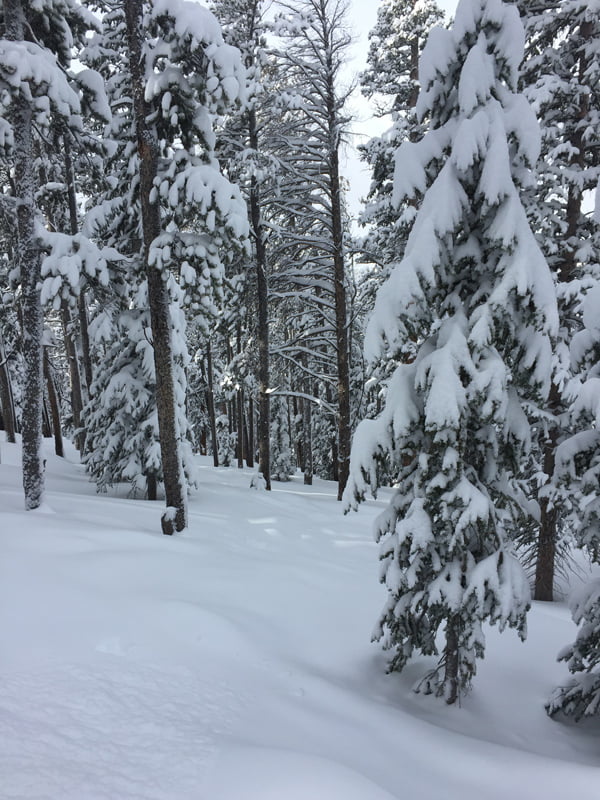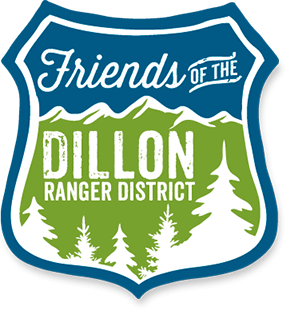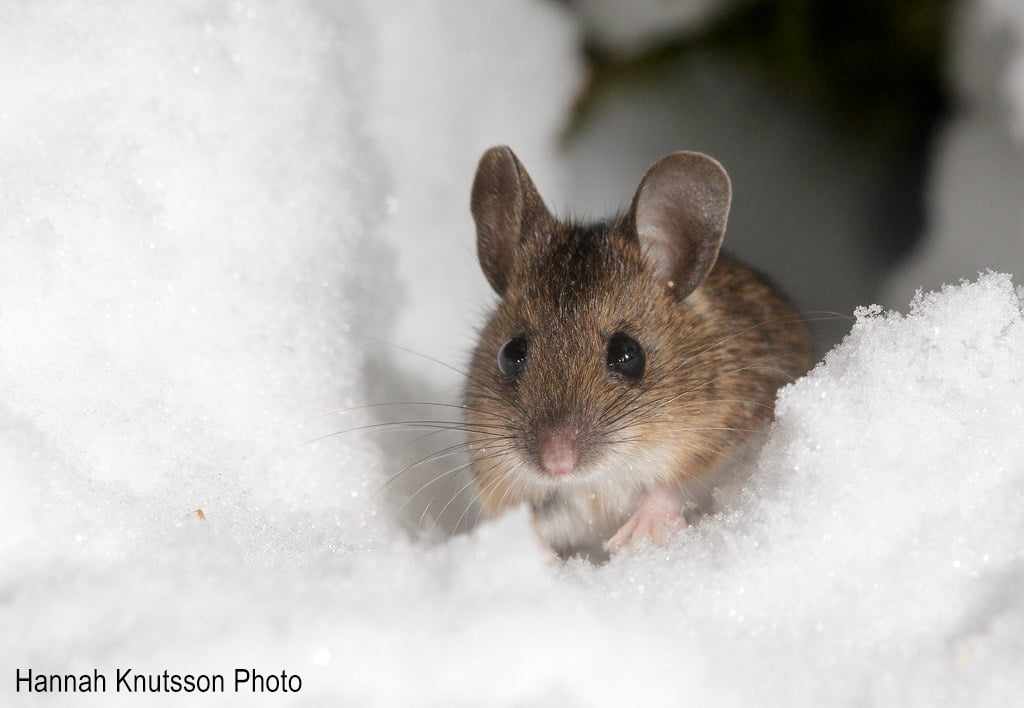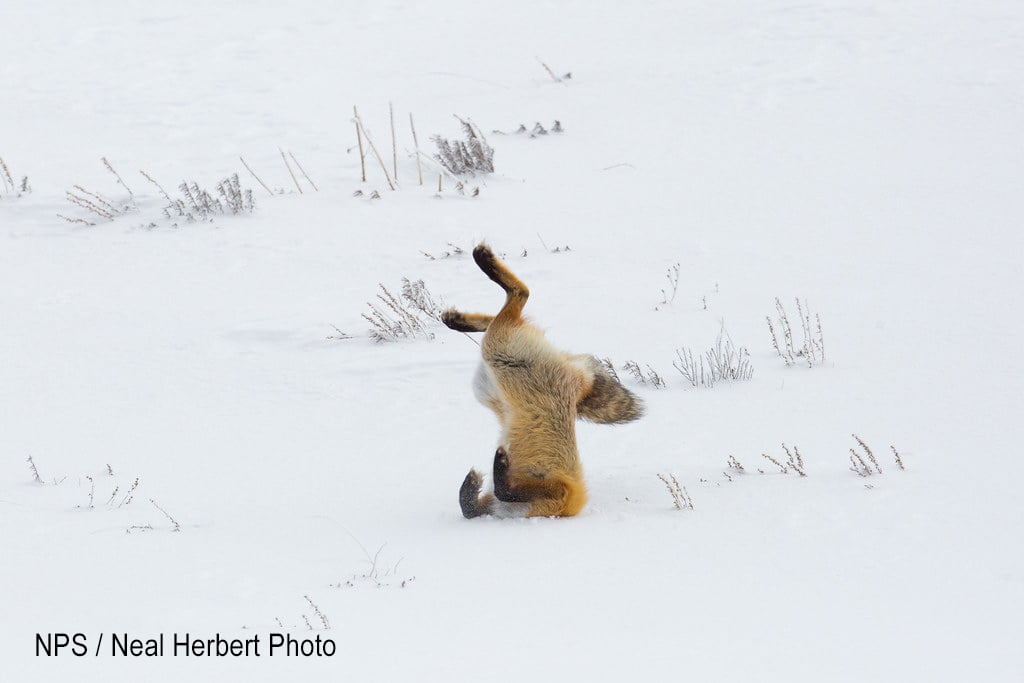The Subnivean Zone: The World Beneath the Snow
Winter in the Rockies can be harsh and cold. The days are shorter, the nights are frigid, and our forests appear to be quiet and barren—as if all the animals are hibernating or have evacuated to warmer climates. But there is more to see than what meets the eye. In the Rocky Mountains we humans make the annual adjustment to the colder months, (some more begrudgingly than others) by bundling up in our warmest jackets, spending more time inside, or relishing the joys of sliding on snow. Just as our lifestyles change come winter, so do the lifestyles and survival adaptations of many animals.

There are three major survival adaptations that animals utilize throughout the winter months. Some animals migrate, others hibernate, and the “brave” ones tolerate. With specialized adaptations, tolerating animals can survive and perhaps thrive in the winter. Some critters live within the snowpack to survive harsh Colorado winters. When taking a walk in the snowy forest, you may not realize there is a whole world of living wonders beneath your feet. What is going on underneath the snow?

Welcome to the subnivean zone…
The subnivean zone is the microhabitat made up of the hollow air space between the snowpack and the ground. This seasonal “housing” is created by a few different factors. When snowflakes start to fall in the autumn, the snow catches on vegetation and rocks and sometimes doesn’t make direct contact with the ground. Next, warmth radiates from the ground and transforms the lowest layer of snow into water vapor. This water vapor then freezes again once it is connected to the snow overhead. This process, also called sublimation, results in a “roof” and some open-air space between the snow and the ground. It takes only six inches of snow to provide insulation to the area beneath.
As the snowpack gets deeper throughout the winter, this zone becomes insulated and protected from the harsh elements. The factors that result in the creation of the subnivean zone also incidentally produce a weaker, “rotted” bottom layer of snow compared to a denser top layer, forming slab avalanche conditions on steeper slopes. While the air temperature may be extremely frigid, the ground and zone directly below the snow stays at around 32 degrees Fahrenheit, due to heat radiating from the core of the Earth.
Who lives here, anyway?
Some of the organisms that reside in the subnivean zone include voles, deer mice, moles, shrews, spiders, fungi and plants. Animals here create extensive tunnel systems to move around and forage for food. These small animals will consume seeds and plants to survive the winter. Mice and voles will stockpile food so that they have a steady supply. Some of the tunnels in this intricate microhabitat lead to known food sources while others lead to the dens where the little critters dwell and sleep.
There are also entrance holes which allow carbon dioxide to escape the tight spaces. While the subnivean zone provides some safety for the animals that live there, it does not always keep predators out. Entrance holes also make it easier for predators like the ermine to hunt for prey. While ermine do not live in the subnivean zone, their slender body shape seems like it was made for navigating the narrow halls of the world under the snow to look for their next meal.
Above the safety of the covering snow, predators have also adapted to survive the winter months. Owls can hear animals scurrying around under the snow from up to 30 yards away! Foxes have a very strong sense of smell that they will follow. Once they identify a precise location, they jump and pounce all the way through the subnivean layer to capture their prey.
What sorts of clues could help you find signs of life in the subnivean zone?
Next time you are skiing or snowshoeing in the forest, take a moment to look for tracks that lead to one of their entrance holes on top of the snow. As the snow melts in the spring, you may even be able to see the fragile roofs of the subnivean tunnels. Remember to not disturb any animal big or small, as they need to save all the energy they can during colder times where food is not ample.
How to protect the animals that live in the subnivean zone as well as the rest of our National Forest:

Critters big and small rely on the snowpack to survive the harsh winter months. Without snow the subnivean dwellers would be left without an insulating layer to inhabit and ultimately be forced to migrate or die. This would in turn affect the populations of their predators since they would be left without a food source. Snow is vital to the survival of these animals!





